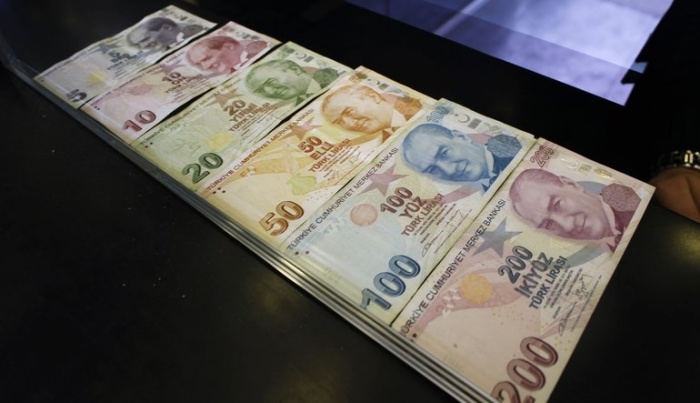The depreciation of Turkey’s lira has led to unexpected challenges, with ATMs across the country breaking down under the weight of increasingly depreciated banknotes, bne IntelliNews reported on Monday.
According to Fibabanka’s general manager, Ömer Mert, during a televised interview with BloombergHT on October 22, transactions like home sales are causing bank staff to spend hours counting banknotes with machines due to the lira’s decreased value.
“And ATM machines are broken due to counting out money,” Mert said, explaining that the depreciation has created issues with fitting banknotes into ATMs and added workload on the machines, leading to frequent malfunctions. “We ask customers to use ATMs due to the workload caused by counting out banknotes at branches,” he added, further emphasizing that Turkey needs larger denominations.
Despite demand, Mert said new, larger denominations are unlikely soon due to regulatory and legislative delays. “There is a 100 percent need for bigger banknotes,” he said.
In recent years Turkey’s coinage also faced issues due to inflation. By 2021 the nominal value of Turkish coins had fallen below their scrap value, leading to a reduction in weight by the state mint in 2023. However, the lighter coins were rejected by many vending machines and automats.
Economic control slipping
Turkey’s economic stability has suffered since August 2018, when the administration of Turkish President Recep Tayyip Erdoğan lost control over the lira’s value. The USD/TRY exchange rate, which had been around 4 lira per dollar in 2018, has surged nearly 700 percent, reaching the 34s this August. Turkey’s cumulative inflation rate has similarly spiraled.
Two months ago the current central bank governor, Fatih Karahan — appointed in July 2023 as part of Turkey’s new “orthodox” economic team — sidestepped a question on the introduction of 500-lira and 1,000-lira banknotes, noting that while formulas exist to determine their necessity, he did not elaborate on them. Currently, 80 percent of the lira banknotes in circulation are in the 200-lira denomination, the largest available, reflecting years of hyperinflation in the country.
In the early 2000s President Erdoğan oversaw the removal of six zeroes from the Turkish lira, an action he continues to celebrate. Across the 1990s Turkey had million-lira banknotes, but Erdoğan has blocked the release of larger notes, a policy he views as a legacy of stabilizing the lira.
Hyperinflation hits hard
On October 3, the Turkish Statistical Institute (TurkStat) reported that Turkey’s official consumer price index (CPI) inflation was 49 percent year-on-year in September, a slight decrease from August’s 52 percent. However, the Istanbul-based ENAG inflation research group calculated inflation at 89 percent year-on-year in September, revealing the true impact on consumers.
Local companies face hyperinflationary accounting standards per International Accounting Standard (IAS) 29. If the producer price index (PPI) rises more than 100 percent over three years or 10 percent in the last year, companies are required to apply hyperinflationary accounting. The implementation of these rules, initially delayed, will now apply to banks, leasing firms and asset management companies as of January 1, 2025. The insurance sector will also adopt the rules starting in January 2025, while small companies with annual turnover below TRY 50 million, or around $2 million, are exempt from applying the rules in Q2 and Q3 of 2024.



